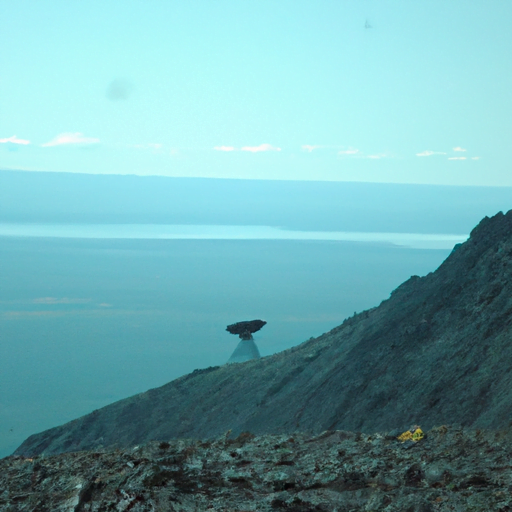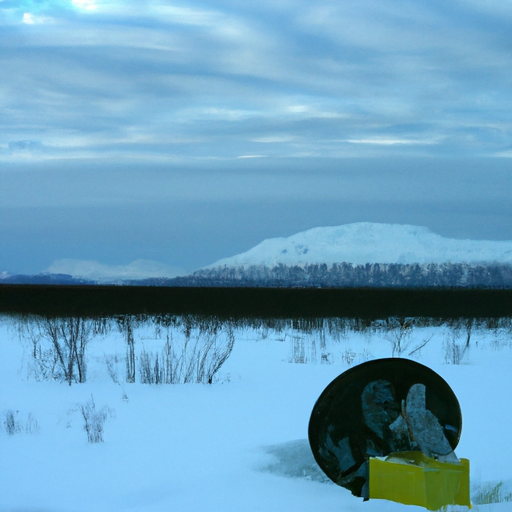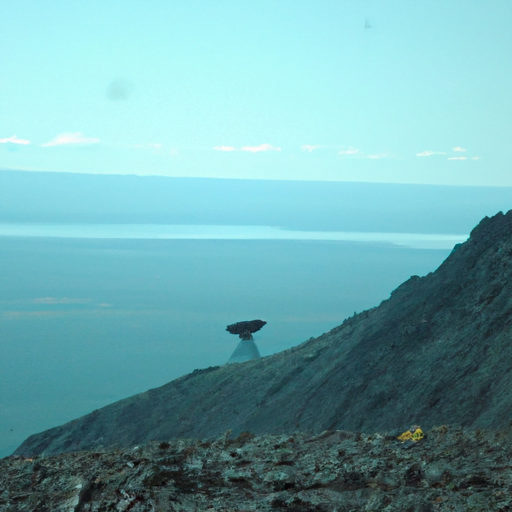Have you ever wondered if it’s possible to set up an internet connection in remote areas? Perhaps you’ve dreamt of living off the grid, but still want to stay connected to the online world. Well, the good news is that it is indeed possible to have internet access in even the most remote locations. In this article, we will discuss the various options and technologies available for setting up an internet connection in remote areas, so you can stay connected no matter where you are.
Living off the grid can be a wonderful experience, allowing you to disconnect from the fast-paced world and embrace a simpler way of life. However, in today’s hyperconnected society, staying completely disconnected may not always be practical or desirable. That’s where setting up an internet connection in remote areas comes into play. Fortunately, advancements in technology have made it possible to access the internet even in the most secluded locations. From satellite internet to mobile hotspots and wireless mesh networks, there are various options available, each with its own advantages and limitations.
In the next sections, we will dive into the different methods of setting up an internet connection in remote areas. We will explore the benefits of satellite internet, which relies on space-based technology to provide coverage to even the most distant locations. Additionally, we will discover the power of mobile hotspots, which utilize cellular networks to beam internet signals to your devices. We will also look into the innovative concept of wireless mesh networks, where devices within a network work together to extend internet coverage. By the end of this article, you will have a better understanding of the options available for setting up an internet connection in remote areas and be able to choose the solution that best fits your needs.

Understanding Off Grid Living
Off-grid living refers to the lifestyle of living self-sufficiently without relying on public utilities such as electricity and water supply. In remote areas where traditional infrastructure is not readily available, off-grid living becomes a way of life. While it offers freedom and independence, it also comes with its own set of challenges. One of the key challenges faced by off-grid residents is the lack of internet connectivity. In this article, we will explore the importance of internet connectivity in off-grid living and discuss available options for setting up an internet connection in remote areas.
Challenges of living in remote areas
Living in remote areas presents various challenges, including limited access to basic amenities. The lack of proper infrastructure, such as roads, electricity, and telephone lines, makes it difficult for the residents to have access to the internet. Internet connectivity is essential not only for communication and entertainment but also for accessing online services like banking, healthcare, and e-commerce. In addition, it plays a crucial role in education and remote work opportunities. Without internet access, the residents might feel isolated and disconnected from the rest of the world.
Importance of internet connectivity in off-grid living
In today’s digital age, the internet has become a necessity for most people. It is a vital tool for communication, information gathering, and entertainment. For those living off-grid, internet connectivity is even more crucial. It allows them to stay connected with family and friends, access educational resources and online courses, and enjoy entertainment options like streaming movies and music. Moreover, the internet enables off-grid residents to work remotely, start online businesses, and participate in online communities. It opens up a world of possibilities and enhances the quality of life in remote areas.
Available Options for Internet Connection
When it comes to setting up an internet connection in remote areas, several options are available. Let’s explore some of them:
Satellite internet
Satellite internet works by transmitting and receiving data signals through satellites in space. It is an ideal option for off-grid residents as it does not require traditional infrastructure like telephone lines. With a satellite dish installed on your property, you can receive internet signals directly from the satellite. However, satellite internet has its limitations. It can be expensive, and the speed and latency can vary depending on the weather conditions and the number of users in your area.
Cellular internet
Cellular internet uses the cellular network to provide internet access. Off-grid residents can use a cellular data plan and a compatible device to connect to the internet. The availability of cellular internet depends on the coverage in your area. While cellular internet offers relatively faster speeds compared to satellite internet, it may not be suitable for areas with weak or no cellular coverage.
Wi-Fi extenders and boosters
If you have a nearby location with existing internet connectivity, such as a neighbor’s property or a community center, you can set up Wi-Fi extenders or boosters to receive and amplify the signals. These devices can help extend the range of the existing Wi-Fi network, allowing you to access the internet from your off-grid location. However, this option relies heavily on the availability and strength of the existing Wi-Fi network.
Wireless internet service providers
Wireless internet service providers (WISPs) are companies that offer internet access through wireless signals. They use specialized equipment to transmit and receive data wirelessly, allowing off-grid residents to connect to the internet. WISPs operate independently of traditional infrastructure and can provide reliable internet connectivity in remote areas. However, the availability of WISP services may vary depending on your location.

Assessing the Signal Strength
Before setting up an internet connection in a remote area, it is crucial to assess the signal strength and availability of different internet providers. Here are some steps to help you in the process:
Researching available internet providers
Start by researching the internet providers that offer services in your area. Look for providers who specialize in serving remote locations or off-grid communities. Read reviews and customer experiences to get an idea of their service quality and reliability.
Checking coverage maps
Most internet providers have coverage maps that indicate the areas where they offer service. Check the coverage maps of the providers you are interested in to see if they cover your remote location. Keep in mind that coverage maps are not always 100% accurate, so it’s essential to verify the availability of service through other sources as well.
Considerations for avoiding interference
In remote areas, there might be limited internet providers, and multiple residents might end up using the same provider. This can lead to signal interference and slow internet speeds. Consider the number of users in your area and their internet usage patterns to avoid potential interference issues.
Building Infrastructure for Internet Connection
Once you have assessed the signal strength and availability of internet providers, it’s time to build the necessary infrastructure for your internet connection. Depending on the chosen internet option, here are some steps you might need to take:
Installing satellite dish or antenna
If you opt for satellite internet, you will need to install a satellite dish on your property. The dish needs to be positioned correctly to receive signals from the satellite. Follow the manufacturer’s instructions or seek professional help for the installation process.
Setting up a cellular data plan
For cellular internet, you will need to choose a suitable cellular data plan that offers sufficient data allowance and coverage for your needs. Get a compatible device, such as a cellular modem or a portable hotspot, and follow the instructions provided by the cellular service provider to set up the connection.
Configuring Wi-Fi extenders
If you plan to extend an existing Wi-Fi network, you will need to set up Wi-Fi extenders or boosters. Follow the manufacturer’s instructions to configure and position the extenders appropriately for optimal signal strength.
Choosing appropriate wireless equipment
When using a wireless internet service provider, you might need to install specialized equipment, such as antennas or receivers, to establish the connection. Consult with the chosen provider for guidance on the required equipment and the installation process.
Powering the Internet Equipment
In remote areas, off-grid residents often rely on alternative power sources to meet their energy needs. It is essential to consider the power requirements for your internet equipment. Here are some options for powering your internet connection:
Solar power systems
Solar power systems can harness the energy from the sun to generate electricity. Install solar panels on your property and connect them to batteries or an inverter system to store and use the generated power. This way, you can ensure a sustainable and environmentally friendly power source for your internet equipment.
Wind power systems
If your remote location experiences consistent wind patterns, you can consider installing a wind power system. Wind turbines can generate electricity that can be stored and used to power your internet equipment. However, wind power systems require careful assessment of wind patterns and the availability of sufficient wind speeds.
Generator setup
In cases where solar or wind power may not be sufficient, setting up a generator can provide a reliable backup power source. Choose a generator that meets your power requirements and follow the manufacturer’s instructions for safe installation and operation.
Battery backup solutions
To ensure uninterrupted internet connectivity, it is recommended to have a battery backup system in place. This can provide temporary power during power outages or when the alternative power sources are not generating enough energy. Invest in high-quality batteries and ensure proper maintenance to prolong their lifespan.
Ensuring Security and Data Privacy
In an off-grid setting, securing your internet connection and protecting your data privacy become even more important. Here are some measures you can take:
Implementing firewalls and secure network protocols
Set up firewalls and use secure network protocols to protect your internet connection from unauthorized access. This can help prevent security breaches and ensure the privacy of your data.
Using reliable VPN services
A Virtual Private Network (VPN) encrypts your internet traffic and provides a secure connection to the internet. Consider using a reliable VPN service to protect your online activities and maintain your privacy.
Regularly updating security software
Ensure that all your devices connected to the internet are protected by up-to-date security software. Regularly update the software to stay protected against the latest threats and vulnerabilities.
Troubleshooting Common Issues
Setting up and maintaining an internet connection in remote areas can sometimes be challenging. Here are some common issues you might encounter and how to troubleshoot them:
Dealing with connection dropouts
If your internet connection frequently drops, check the signal strength and ensure that all the equipment is properly connected. You may need to reposition antennas or extenders to improve the signal quality. If the issue persists, contact your internet service provider for assistance.
Resolving slow internet speeds
Slow internet speeds can be caused by various factors, including signal strength, interference, and network congestion. Try moving your equipment to a different location to improve signal quality. Avoid using large bandwidth-consuming applications simultaneously to minimize network congestion. If the problem persists, consider upgrading your internet plan or contacting your provider for further assistance.
Fixing signal interference problems
In areas with multiple users and limited internet providers, signal interference can occur. This can lead to degraded internet speeds and connectivity issues. To resolve interference problems, consult with your provider and consider adjusting frequencies or upgrading equipment to minimize interference.
Training and Support Resources
Setting up and maintaining an internet connection in remote areas might require some technical knowledge and expertise. Here are some resources you can rely on for training and support:
Online tutorials and documentation
Many internet providers offer online tutorials and documentation that guide you through the setup and troubleshooting process. These resources can provide step-by-step instructions and troubleshooting tips for common issues.
Community forums and user groups
Joining online forums and user groups can be a valuable source of information and support. Connect with other off-grid residents who have already set up their internet connections and seek advice from their experiences.
Professional assistance for complex setups
For complex setups or if you lack technical expertise, consider seeking professional assistance. There are companies and technicians specializing in setting up internet connections in remote areas who can provide guidance and ensure a reliable and efficient setup.
Cost Considerations
Setting up an internet connection in remote areas can incur upfront and ongoing expenses. Here are some cost considerations to keep in mind:
Comparing upfront and ongoing expenses
Compare the upfront costs of equipment and installation for different internet options. Consider the ongoing expenses such as monthly service fees, data charges, and maintenance costs to determine the most cost-effective option for your needs.
Budgeting for equipment and services
Create a budget based on the estimated costs of equipment, installation, and ongoing services. This will help you prioritize your expenses and allocate funds accordingly.
Cost-effective alternatives to traditional providers
In some cases, traditional internet providers may not be available or may be too expensive for off-grid residents. Explore alternative options such as community networks, cooperative networks, or shared internet services with neighbors to reduce costs.
Conclusion
Setting up an internet connection in remote areas is possible, albeit with some challenges. With the right research, planning, and resources, you can overcome the geographical limitations and enjoy the benefits of internet connectivity in off-grid living. Whether you choose satellite internet, cellular internet, Wi-Fi extenders, or wireless internet service providers, the key is to assess the signal strength, build the necessary infrastructure, and ensure reliable power supply. By implementing security measures, troubleshooting common issues, and seeking training and support resources, you can establish a stable and efficient internet connection that enhances the quality of life in remote areas. So, don’t let geographical limitations stop you from connecting with the world – set up your internet connection and embrace the opportunities that come with it.





